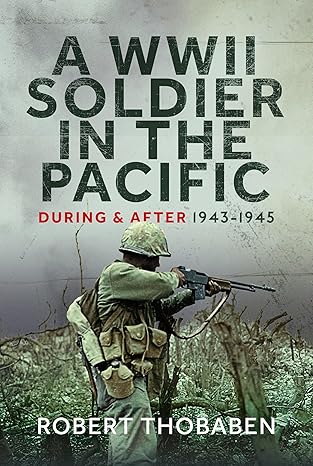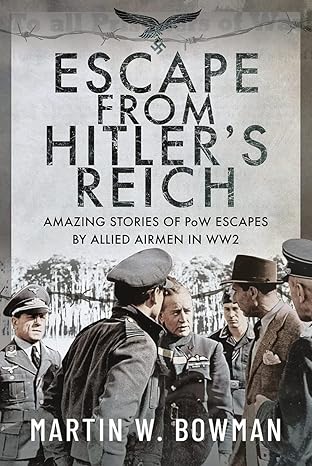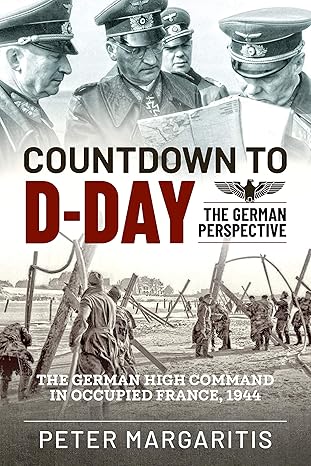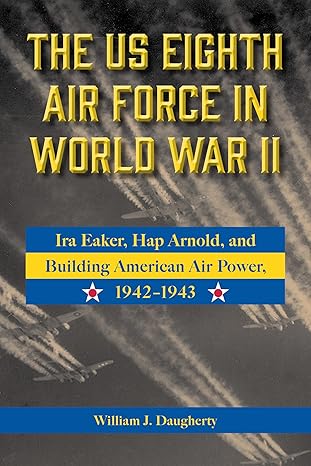The Search for America's Battlecruiser
By Edward J. Langer
Prologue
The battlecruiser was thought of as the ship that could do everything. Scout, do battle with cruisers and destroyers, protect shipping lanes and lines of communication and join the battle line and slug it out with enemy battlecruisers and battleships. Great Brittan and Germany adopted this theory, the United States Navy long debated it, but eventually gave in only to see them scraped or converted into aircraft carriers. But did the US Navy actually have a battlecruiser and not acknowledge it? Two classes of heavy cruisers come close to fulfilling the roles of the battlecruiser. This would include the USS Alaska class and the USS Des Moines class.
One of the most hotly debated ship types in the United States Navy was the battlecruiser. Other navies had them in service or under construction - should the United States follow suit? As early as the summer of 1903 at the US Naval College's Summer Conference, it was suggested that the navy develop a "fast Battleship" mounting four 12" guns replacing armored cruisers and supplementing the battle line. In May of 1904 the British developed plans that would lead to the development of the all big gun battleship and the idea was presented for a big 9.2-inch gun fast cruiser later changed to 12-inch guns.
The battle of Tsushima between Russia and Japan on May 27-28, 1905 showed the value of the battleship, but not any battleship. Many navies had equipped their battleships with a main battery of eight 10-inch or 12-inch guns in two turrets but also fitted smaller caliber 8-inch, 7-inch guns. At the battle of Tsushima the firing range started at 7000 yards, ideal for the large guns of the day. There was no need for smaller guns. The large guns did the damage. The superior Japanese battle tactics were a major factor in the battle. Also, the Russian fleet had steamed thousands of miles and needed a refit while the Japanese fleet was in fighting condition.
With the battle of Tsushima over, it was now important to determine what lessons could be learned from it. Some officers like Lieutenant Commander William Sims, the U.S. Navy's Inspector of Target Practice, in September 1905, wrote to President Theodore Roosevelt on the need for the construction of armored cruisers (battleships) with a uniform battery of nine 10 inch guns and a speed of 23 knot. In December Captain Richard Wainwright, USN, wrote that the battle proved the importance of a uniform battery in capital ships.
Not everyone agreed though. Alfred Thayer Mahan wrote in "Reflections, Historic and Other, Suggested by the Battle of the Japan Sea," that the battle argued against Dreadnought design and large armored cruisers and the need for the traditional armored cruiser. One outcome of the battle was that the USS Montana, an armored cruiser, laid down in April 1905, was the last American armored cruiser.
Great Britain Ignored Mahan and launched HMS Dreadnought on February 10, 1906. It was followed in 1907 by HMS Bellerophon, Superb and Temeraire. Each featured ten 12-inch guns, a speed of 21-knots and 11-inch armor plate in Dreadnaught and 10-inch armor plate in the Bellerophon class battleships.
The United States was a little bit slower but it also ignored Mahan and launched The USS Michigan on May 26, 1908, the South Carolina on July 11, 1908 the North Dakota on December 10, 1908 and the Delaware on February 6, 1909. The South Carolina and the Michigan carried eight 12-inch guns, could maintain a speed of 18 knots and had 12-Inches of armor plate. The Delaware and the North Dakota carried ten 12-Inch guns, had a speed of 21 knots and had 11-inches of armor plate.
Germany was not far behind with the Nassau class consisting of the SMS Nassau, Westfalen, Rheinland and Posen. These ships mounted twelve 11-inch guns had a speed of 19.5 knots and 11.8 inches of armor, all launched in 1908. These were followed by the Helgoland class consisting of SMS Helgoland, Ostfriesland, Thuringen and Oldenburg. Their armament consisted of twelve 12-inch guns, 11.8 inches of armor plate and speed of 20 knots all launched in 1909 except Oldenburg launched in 1910. And the construction race continued.
These were not like former battleships, slow at 10 to 15 knots, sporting all sizes of guns. They were bigger, with more horsepower, making them faster and mounting all big guns with heavy armor protection. They would be second to none.
Smaller navies tried to keep up with new construction but these new battleships were bigger more complex and definitely more expensive. And each new series of ships was an improvement over the previous series of ships, so navies had to keep building just to stay current in technical advancements in armor plate, guns, fire control and propulsion.
The new British battleships changed the balance of naval power in favor of Great Britain. All other battleships and armored cruisers in all other navies were immediately obsolete. Other navies had to build "Dreadnaught" style battleships to stay in the game or become secondary players. While Great Britain had the lead, Germany and the United States were not far behind if not gaining and possibly threatening to overtake the Royal Navy.
Still the question of a faster heavily armed cruiser was in the minds of some British admirals. Admiral Fisher soon to be First Sea Lord in 1904 advocated for HMS Unapproachable a big gun cruiser. But for what purpose? The only thing they had was Fisher's idea of using battlecruisers as a source of "resistless power" against enemy cruisers, attacking lines of communications and a way to "grasp a flying enemy by the tail, and hold him," in fleet actions. The British were going to build an expensive new type of warship that had a vaguely defined purpose. That didn't stop them.
HMS Indomitable was launched March 16, 1907 followed by Invincible on April 13th and Inflexible on June 6th. Each had eight 12-inch guns a speed of 25-1/2 knots and 6-inches of armor. These were followed by Indefatigable in October of 1909, New Zealand January 1911 and Australia October 1911. The Indefatigable class sported eight 12-inch guns, a speed of 25-knots and 6-inches of armor. The Lion class of battlecruisers, Lion and Princess Royal, mounted eight 13.5-inch guns, had a speed of 27-knots and 9-inches of armor plate. The Queen Mary was similar to the Lion's class. The British also built these other battlecruisers: Tiger, Renown, Repulse, Courageous (rebuilt as an aircraft carrier), Glorious (rebuilt as an aircraft carrier), Furious (rebuilt as an aircraft carrier) and the Hood.
Germany was a bit slower but it launched SMS Von Der Tann, with eight 11-inch guns on March 20, 1909. It was followed by the SMS Moltke, the Goeben and the Seydlitz with ten 11-inch guns. The SMS Derefflinger and Lutzow both launched in 1913 mounted eight 12-inch guns and as did the last German battlecruiser the SMS Hindenburg. Three of the SMS Mackensen class battlecruisers were launched but never completed. They would have mounted eight 13.8-guns. A final class of German battlecruisers was the Ersatz Yorck class. This class would have mounted eight 15-inch guns. None were launched.
The United States was not as eager to build battlecruisers. Arguments went back and forth over the merits of this new type of warship. The 1907 Summer Conference at the Naval War College proposed that the navy build ships similar to HMS Invincible. The 1909 Summer War College Conference declined to endorse battlecruiser construction. In September 1910 the General Board annual report on new construction found that battlecruisers were not needed by the United States Navy. They favored more battleship construction.
In a complete change of position, in March of 1912 Rear Admiral Hugh Osterhaus, Commander of the U.S. Atlantic Fleet used four imaginary battlecruisers on the side of one of his teams in a fleet exercise. In September the General Board proposed a five-year plan to build 21 new battleships and 8 battlecruisers. In contrast in December Commander William V. Pratt, an instructor at the Naval War College, wrote that battlecruisers are unnecessary. They would make no difference to the battle's outcome.
Finally, in April 1913, Rear Admiral David Beatty of the Royal Navy issued a memo describing the missions of battlecruisers. They would perform reconnaissance, support blockades, support cruiser squadrons, shadow enemy battleships and join the battle line in fleet engagements. Great Britain now had a clear direction and purpose for their battlecruisers. In August, Admiral George Callaghan, RN, Commander-in-Chief of the Home Fleet, stated that the purpose of the battlecruiser is to counter German battlecruisers.
With the outbreak of World War One on July 28, 1914, all of the theories of the use of the battlecruiser would be put to the test as well as the ships themselves. The first test came in November. Admiral Maximilian von Spee commanded a German squadron consisting of the armored cruisers SMS Scharnhorst and Gneisenau, the light cruisers SMS Nurnberg, Dresden and Leipzig and three auxiliaries. On November 1, 1914, they sank the British cruisers HMS Good Hope and Monmouth at the Battle of Coronel off the coast of Coronel, Chile.
Running short on supplies Admiral Spee wanted to flee to Germany but stopped to raid the Falkland Islands. But the British had deployed the battlecruisers HMS Invincible, and Inflexible, the armored cruisers HMS Carnarvon, Cornwall and Kent, the armed merchant cruiser HMS Macedonia and the light cruisers HMS Bristol and Glasgow to the Falkland. The battle commenced at 10am with Spee's ships fleeing. Spee had a 15-mile lead but his top speed was only 22.5 knots, three knots slower than that of the newer battlecruisers' 25.5 knots. By 1pm the British had caught up with Spee and sank 8 of his ships. Only the auxiliary SeydLitz and the light cruiser Dresden escaped destruction. The battlecruiser proved its worth.
But the big test had yet to come. It arrived on May 31st to June 1st, 1916 at Jutland. The British Grand Fleet met the German High Seas Fleet for what was hoped to be a decisive battle. In this battle the British lost the battlecruisers Indefatigable, Queen Mary and Invincible. Germany lost the Lutzow.
Indefatigable was the first to go. Within 14 minutes after the first shots were fired, the Von der Tann scored three hits on the X turret denotating the magazine below it. Von der Tann scored one more hit on the A turret denotating its magazine. Within seconds there was no ship. Shortly thereafter the Queen Mary suffered a similar fate. She was hit in the forward part of the ship by a combined salvo from Derffinger and Seydlitz causing her forward magazines to explode. She sank shortly. The Invincible was lost later in the battle. The Lutzow and the Derffinger fired three salvos at the Invincible and sank her in 90 seconds. The Lutzow was very badly damaged and taking on a tremendous amount of water. The order was finally given to abandon ship and German torpedo boats fired two torpedoes to sink her.
At this engagement, initially, it was German battlecruisers against British battlecruisers. The heavy guns proved their worth against the thin armor of the battlecruisers. But being in a slow-moving battle line and not being able to use their speed and maneuverability proved to be a tactical mistake which cost the British three battlecruisers. The German battle line moved at 18 knots while the British battle line moved at 21 knots.
The British battlecruiser losses were blamed on insufficient armor. But the captains of the ships, to improve their rate of fire, allowed extra bags of cordite propellant to be stored in the turrets. Newer battleships limit the amount of powder that can be placed in the turret at one time. By having the extra cordite in the turret any direct hit would cause a massive explosion which could reach down into the magazine. If that was not enough of a problem they stored extra cordite in the passage ways outside the magazines. To get to the cordite, the magazine doors were left open. If a fire broke out in a magazine the whole ship was imperil. This would explain the total and utter destruction of these battlecruisers.
Poor tactics played an important part too. The British had modern battleships just five miles away that could have joined the battle line and slug it out with the German battlecruisers. An order was given to turn but the order was made by old time signal flags and not by wireless radio and the battleships missed the turn. The ships were modern but the tactics of the admiralty were outdated.
Improper handling of cordite probably was the major cause in the loss of the three battlecruisers. But another reason was that were forced to take on a role in which the design could not handle. The ship's design was for scouting, to target ships with thinner armor such as cruisers, destroyers, and merchant shipping not to join the battle line by itself. It needed the big brother support of the battleship if it was going to be in the battle line. And if involved in a fleet engagement then new tactics should evolve to utilize the speed and versatility of this ship's design to disrupt the enemy's tactical and strategic plans.
After the battle of Jutland there was much discussion on the value of the battlecruiser. In August 1916 Congress passed the Naval Bill which appropriated funds to build 10 battleships and 6 battlecruisers. The Navy assured Congress that the battlecruisers would be used for scouting not in fleet actions
With the war over in November 1918 peace settled over most of the world. But the effect of the war still remained. The costs were staggering
| Nation | Cost in 1918 Dollars | Cost in 2018 Dollars | Number of Soldiers who died |
| Great Britain | $35,334,012,000 | $587,590,189,555 | 908,171 |
| France | $24,265,583,000 | $403,526,735,504 | 1,357,800 |
| United States | $22,625,253,000 | $376,248,717,496 | 116,516 |
| Italy | $12,413,998,000 | $206,439,717,006 | 650,000 |
| Japan | $40,000,000 | $665,183,665 | 300 |
War is expensive as are new warships and the economies of these countries needed to recover from the war. But these countries were still building expensive battleships and battlecruisers and preparing for the next war.
To curb spiraling costs President Harding called the Washington Conference in 1921-1922 to limit the size of the world's navies. After much discussion and Japan feeling they got the short end of the deal, a formula was developed giving the United States and Great Britain the larger fleets, Japan a smaller fleet and France and Italy with the smallest fleets. There were no other world players with battleships. Numerous battleships had to be scrapped, used for target practice or converted to other uses. Several battlecruisers then under construction were converted to aircraft carriers such as the USS Lexington and the USS Saratoga. No American battlecruiser were completed as a battlecruiser. Only one battlecruiser then under construction, the HMS Hood, was allowed to be completed. The Hood was the only one of four Admiralty class battlecruisers to be completed. Its cost was £60,025,990.00 in 1920 or £255,979,150.00 in 2017 ($324,966,231.00-2017). Warships and the quantities that were being built put a tendinous burden on the economies of countries recovering from war. A ten-year limit was placed on new construction. Thus, ended America's quest for a battlecruiser or did it?
Did the United States develop a battlecruiser? What was a battlecruiser good for? The battle of Jutland proved that they didn't do well in the battle line but the battle of the Falkland Island showed they had merit.
The Alaska class large cruiser comes close to being the American battlecruiser. This class included the USS Alaska and the USS Guam. They had a speed of 33 knots, were 808.5 feet long with a displacement of 29,779 tons and had 9-inches of armor belt. Some parties in the navy referred to them as battlecruisers but this was discouraged. By comparison the battleship USS Nevada had a top speed of 20 knots, was 583 feet long and displaced 27,500 tons with 13.5-inches of armor belt. While the Nevada sported 14-inch guns the Alaska only had 12-inch guns. But these were not the 12-inch guns that were on the USS Arkansas, they were a totally new design much more powerful. The AP shell had the same penetrating power as America's older 14-inch gun. While Alaska did mount the 12-inch sized guns of the original battlecruisers but not the 13.5-inch and 15-inch guns of the later British battlecruisers nor the 16-inch guns of the proposed American battlecruisers, they still mounted a very powerful gun. A final comparison is with the USS South Dakota. The South Dakota was 680 feet long, had a displacement of 37,870 tons, and a speed of 27.5 knots. The Alaska was longer and faster. The Alaska would be wise to stay away from doing battle with a ship like either the Nevada or a South Dakota class battleship. These ships mount heavier armor plate and while they may take some AP rounds the shells they fire back are much more deadly especially against the thin armor of the Alaska's. This is where superior speed comes into play. Shoot and maneuver, get out of the way, find a way to get in close enough for another shot or shadow and wait for backup.
Another class of ships that come close to taking on the role of the battlecruiser is the Des Moines class. This included USS Des Moines, Salem and Newport News. These ships were 716.5 feet long, displaced 17,000 tons and had a speed of 33 knots. While this class only mounted an 8" gun, it was the mark 16 8-inch 55 caliber gun. It could penetrate 10-inches of armor plate at 10,000 yards and 8-inches of armor plate at 15,000 yards. This gun was semiautomatic. Each gun could fire approximately ten rounds per minute. And with the ship's advanced radar fire control system these guns were deadly accurate. With nine guns per ship, there would be 90 rounds of armor piercing shells raining down on the deck of an enemy ship every minute. Most of the topside, which is not heavily armored, would be destroyed. Some of the shells would penetrate the deck armor, which is not very thick, and explode inside the ship.
In the battle between the USS South Dakota and the IJN Kirishima, the South Dakota was hit at least 26 times. Of this total it was determined that one of the hits was caused by one 14-inch shell, two were caused by 5-inch shells, four were caused by 6-inch shells and 19 were caused by 8-inch shells. The damage was superficial but it knocked out all communications and most of the radar systems. The South Dakota was basically blind at night. If it were not for the USS Washington coming to her rescue she would have been a sitting duck for Japanese torpedoes. The South Dakota was in for permanent repairs from December 18th to February 25th. Imagine the damage that would have been done if 90 8-inch AP shells had hit the South Dakota in just one minute and another 90 the next minute. There wouldn't have been a topside left. And the Des Moines class had a speed advantage of 6 knots, so that they could scoot out of harm's way and not be forced to slug it out.
While the United States Navy never officially had a battlecruiser the Alaska class and the Des Moines Class could fill the roles assigned to that type of ship. They had the speed and the firepower. They could only get in a few opening shots before they had to use their superior speed to escape from a heavily armored superior enemy. Their job was not to form a battle line and slug it out unless it was the ultimate last resort. Their job would be to defeat enemy cruisers, support destroyer attacks, and maintain sea trade lanes and lines of communications.
The battlecruiser proved its value in the battle of the Falkland Islands but they just couldn't stand in the slow-moving battle line and slug it out with opposing battleships and battlecruisers.
| * * * |
Show Notes
Bibliography
…….."Battlecruisers: The Glass-Jawed Warship that Failed" The National Interest September 13, 2015, https://nationalinterest.org/feature/battlecruisers-the-glass-jawed-warship-failed-13828
………" United States of America, 8"/55 (20.3 cm) RF Mark 16," NavWeaps, http://www.navweaps.com/Weapons/WNUS_8-55_mk16.php
…….."USS South Dakota BB57 Gunfire Damage, Battle of Guadalcanal, 14-15 November, 1942,War Damage Report No. 57", Naval History and Heritage Command: https://www.history.navy.mil/content/history/nhhc/research/library/online-reading-room/title-list-alphabetically/w/war-damage-reports/uss-south-dakota-bb57-war-damage-report-no57.html
R. Kowner (ed.), The Impact of the Russo-Japanese War. London: Routledge, 2007
Ryan Peeks, "Battlecruisers in the United States and the United Kingdom 1902-1922" Naval History and Heritage Command, https://www.history.navy.mil/research/library/online-reading-room/title-list-alphabetically/b/battlecruisers-in-the-united-states-and-the-united-kingdom-1902-1922.html
Ian Sturton (ed.), Conway's All The World's Battleships, 1906 to the Present, London: Conway Maritime Press, 1987.
Wikipedia contributors, "Battle of the Falkland Islands," Wikipedia, The Free Encyclopedia, https://en.wikipedia.org/w/index.php?title=Battle_of_the_Falkland_Islands&oldid=899491160 (accessed June 24, 2019).
Wikipedia contributors, "Battle of Tsushima," Wikipedia, The Free Encyclopedia, https://en.wikipedia.org/w/index.php?title=Battle_of_Tsushima&oldid=897505827 (accessed June 24, 2019)
Wikipedia contributors, "USS Alaska (CB-1)," Wikipedia, The Free Encyclopedia, https://en.wikipedia.org/w/index.php?title=USS_Alaska_(CB-1)&oldid=888790525 (accessed June 24, 2019).
Wikipedia contributors, "USS Des Moines (CA-134)" Wikipedia, The Free Encyclopedia, https://en.wikipedia.org/wiki/USS_Des_Moines_%28CA-134%29 (accessed June 30, 2018)
| * * * |
© 2025 Edward J. Langer
About the author:
Mr. Langer is an historian, researcher, and analyst. He holds a B.A. in History from California State University – Fullerton and an M.A. in History from California State University – Los Angeles. He is a member of the International Naval Research Organization and the California Writers Club, Inland Empire Branch. His articles have been published in Military History Magazine, Colloquy and Fresh Ink.
* Views expressed by contributors are their own and do not necessarily represent those of MilitaryHistoryOnline.com.

















